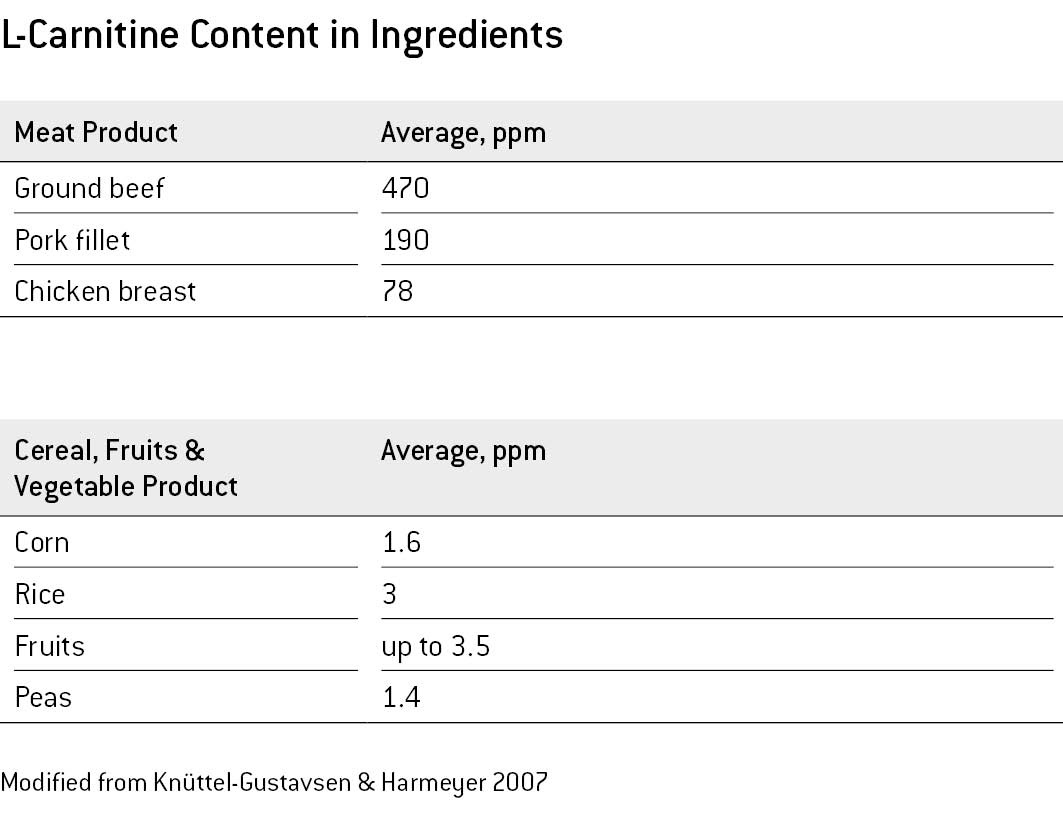What is Carniking® L-Carnitine?
Our Carniking® products are Lonza’s high quality source of L-Carnitine for use in animal nutrition formulations. L-Carnitine has an AAFCO definition (Association of American Feed Control Officials). Carniking® L-Carnitine is approved to be used in pet foods, snacks and treats and in dietary supplements. Carniking® L-Carnitine can be added to complete feeds, base mixes or premixes because of its good flowability. It is also pellet and extruder stable.
L-Carnitine was first discovered in 1905 in red meat and has since been extensively studied. Its main role is to help energy production from fat in mammals. Without sufficient L-Carnitine in the body, mammals and therefore pets cannot utilize fat effectively to produce energy1. L-Carnitine transports long-chain fatty acids across the inner-mitochondrial membrane into the matrix where they are degraded through the beta oxidation to produce ATP (Adenosine triphosphate) as a source of energy.
Carniking® Supplementation Can Be Vital
There are two ways animals can obtain their L-Carnitine needs: endogenous biosynthesis (made within the body) or from feed and supplements containing L-Carnitine.
Most mammals and humans in particular can produce only 25 percent of their L-Carnitine needs and therefore, 75 percent has to come from the diet2. Dietary supplementation with L-Carnitine is recommended under certain conditions:
- Young animal growth and development: L-Carnitine biosynthesis is underdeveloped in young puppies
- Senior adult living: L-Carnitine biosynthesis begins to slow down during the aging process
- Periods of increased exercise and stress
- Muscle development and recovery
- Primary or secondary deficiency: Primary deficiency occurs when the enzymes needed to produce L-Carnitine are missing. Secondary deficiency occurs as a result of an unrelated disease process or treatment3.
The amount of L-Carnitine obtained from pet food intake varies based on ingredients consumed:
- Red meats, poultry and fish provide varying levels of L-Carnitine. Red meat in particular is the highest in L-Carnitine content.
- Fruits, vegetables and grains contain only trace amounts.
 With pet formulations, the types and amounts of meats, grains and vegetables used will vary by stage and brand, so that the final dietary levels of natural L-Carnitine will vary significantly. Of course, pet food recipes formulated with little or no red meat products will contain low levels of L-Carnitine.
With pet formulations, the types and amounts of meats, grains and vegetables used will vary by stage and brand, so that the final dietary levels of natural L-Carnitine will vary significantly. Of course, pet food recipes formulated with little or no red meat products will contain low levels of L-Carnitine.
Pet food or treats with the Carniking® ingredient can help supplement inadequate L-Carnitine intake. As an example, we know that meats, grains and vegetable feed products contain various amounts of vitamins and minerals4. However, with the trend of lower red meat consumption, additional supplementation with L-Carnitine will help to achieve optimal levels and associated health benefits during all stages of dogs lives.
General Functions of L-Carnitine
Fat Metabolism
The body derives its energy from the metabolism of carbohydrates, proteins and fats. In order for the body to utilize these nutrients for energy, they must first be broken down into smaller building blocks to generate energy under the form of ATP. In the case of fats, long-chain fatty acids are transported to the mitochondrion the site where they are converted into energy.
It has been shown in humans that available L-Carnitine in the body decreases with age which can be due to three main reasons:
- The availability of the free L-Carnitine (the active form) pool decreases because feed intake normally decreases with age
- Red meat intake may also decrease with age
- The body’s ability to produce L-Carnitine begins to drop
Our Pledge to Pet Food Customers
- Lonza remains committed to satisfying our customers’ needs with superior, beneficial products, expert technical, regulatory and marketing support, and innovative and sustainable technologies.
- Lonza will continue to invest in generating scientific data on the attributes of Carniking® L-Carnitine and how it can support the well-being of pets around the world.
- Lonza’s high quality standards are demonstrated by the ISO 9001, 14001, FSSC 22000 and FAMI-QS certifications and the operations under the guidance of HACCP and HAZOP principles.
References:
- Reuter SE & Evans AM. (2012) Clin Pharmacokinet 51(9):553-572
- Rebouche CJ. (1999) Modern nutrition in health and disease, Chapter 31:Carnitine (L2):505-512
- Evans AM & Fornasini G (2003) Clin Pharmacokinet 42(11):941-967
- Knüttel-Gustavsen S & Harmeyer J (2007) Food Chemistry 105:793-804
